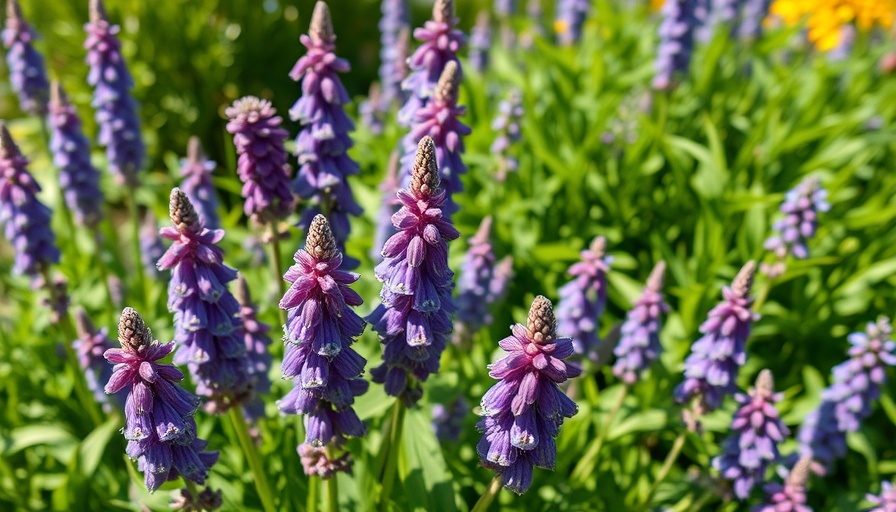
Discover the Beauty of False Indigo: A Native Gem
When it comes to crafting a visually stunning landscape, few perennials can rival the charm of False Indigo, or Baptisia. This native plant, with its tall spires of blue flowers, not only adds a pop of color to your garden but also supports local ecosystems. Whether you're a seasoned gardener or just starting, the cultivation of False Indigo presents a fulfilling gardening project that enhances your flower garden and attracts garden pollinators.
Plant Care for Success
Caring for False Indigo is a straightforward endeavor. These hardy plants thrive in well-draining soil and require minimal maintenance, making them perfect for organic gardening enthusiasts. To begin your planting journey, choose a sunny spot in your backyard garden, as they flourish best under full sun. Incorporate compost to nourish the soil, providing essential nutrients while supporting your garden's overall health.
Garden Design Ideas Featuring False Indigo
Integrating False Indigo into your garden design opens a world of possibilities. Their erect, bushy structure pairs beautifully with ornamental grasses and flowering perennials, creating striking borders in your garden pathways. Consider planting them alongside companion herbs and vibrant flower bulbs to produce a multi-layered effect, enhancing the aesthetic appeal of your outdoor space.
Fostering Biodiversity with Native Plants
By planting False Indigo, you're not just beautifying your yard; you're participating in a crucial conservation effort. Native plants play a significant role in supporting local wildlife. False Indigo is particularly beneficial for attracting butterflies and bees, who rely on these plants for nectar. This simple act of incorporating native plants contributes to the flourishing of garden wildlife and enhances your overall garden ecosystem.
Future Predictions: The Rise of Sustainable Gardening
As awareness of sustainability grows among gardeners, plants like False Indigo are becoming increasingly popular. The trend towards organic gardening reflects a shift in priorities, where gardeners are eager to make choices that benefit both their outdoor living spaces and the wider environment. More gardeners will turn to native species that require less water and fewer chemicals, promoting a vibrant and healthy garden climate.
Common Misconceptions About False Indigo
One common misconception about False Indigo is that it requires extensive care and maintenance. In reality, these plants are resilient and adaptable, thriving in a variety of soil conditions. As long as they are planted in an environment with proper sunlight and drainage, they are remarkably easy to care for. Understanding this aspect can encourage more gardeners to consider adding False Indigo to their plant selections.
Next Steps in Your Gardening Journey
If you're ready to take your gardening to the next level, consider planting False Indigo in your flower beds or as part of your garden borders next spring. Embrace the journey of nurturing these stunning plants while enhancing your landscaping ideas and supporting local ecosystems. Remember, sustainable practices like incorporating native plants into your garden are steps toward a healthier environment.
 Add Row
Add Row  Add
Add 




Write A Comment